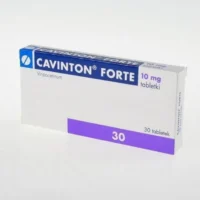Description
Pramipex (pramipexole) Tablets 0.25 mg
Ingredients
- Active ingredient: Pramipexole 0.25 mg per tablet
Dosage
- Dosage: The usual recommended dose is determined by your healthcare provider based on your condition. It is typically started at a low dose and gradually increased to achieve the desired effect
Indications
- Indications: Pramipex is indicated for the treatment of Parkinson’s disease and restless legs syndrome (RLS). It works by helping to restore the balance of a certain natural substance in the brain
Contraindications
- Contraindications: Do not use Pramipex if you are allergic to pramipexole or if you have certain medical conditions
Directions
- Directions: Take Pramipex exactly as prescribed by your healthcare provider. Do not adjust your dose without consulting your doctor. It may be taken with or without food
Scientific Evidence
Pramipex (pramipexole) has been extensively studied for its efficacy in the treatment of Parkinson’s disease and restless legs syndrome. Clinical trials have shown that pramipexole is effective in improving motor symptoms in Parkinson’s disease patients and reducing symptoms of RLS, such as uncomfortable sensations and the urge to move the legs
Additional Information
It is important to follow your healthcare provider’s instructions carefully when taking Pramipex. This medication may cause dizziness or drowsiness, so avoid driving or operating machinery until you know how it affects you. Inform your doctor about all medications you are taking to avoid interactions
Pharmacological Effects
Pramipexole is a dopamine agonist that works by stimulating dopamine receptors in the brain. Dopamine is a neurotransmitter involved in controlling movement and emotions. By mimicking the action of dopamine, pramipexole helps to improve motor function in Parkinson’s disease and alleviate symptoms of RLS
Clinical Trials and Comparative Effectiveness
Several studies have compared the effectiveness of pramipexole with other medications used in the treatment of Parkinson’s disease and RLS. Research has shown that pramipexole is well-tolerated and provides significant improvement in symptoms compared to other drugs. It is often preferred due to its efficacy and favorable side effect profile





